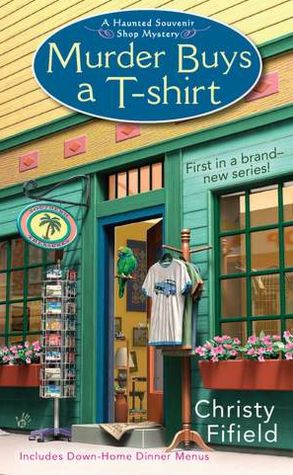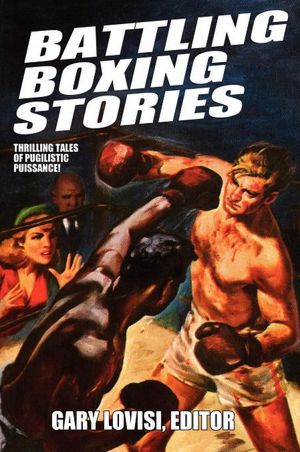 Fierce, beautiful, startling, Elizabeth Hand’s Cass Neary novels explore the mysteries of creative brilliance
Fierce, beautiful, startling, Elizabeth Hand’s Cass Neary novels explore the mysteries of creative brilliance
In Greek Mythology, Cassandra was the prophetess unheeded, a woman both gifted and cursed by her foresight of death and destruction (the fall of Troy, the slaying of Agamemnon) and scorned by an audience of mockers who refused to believe her dark visions.
Cassandra Neary, the could’ve-been-somebody photographer in Elizabeth Hand’s Generation Loss and Available Dark, possesses a special sight as well. As a youth, she experienced visions no one else shared: a striated eye looming in the sky, for example, and a man with green-flecked eyes touching her forehead in a dream, leaving a blinding flash on the very morning she received a camera as a birthday present. As a photographer years later, especially during the heyday of New York’s punk scene, she shot “whatever was going on, speed, smack, sex, broken teeth, broken bottles, zip knives” before moving on to even bleaker subjects: “Pigeons flattened upon the curb; a corpse washed up on the shore of the East River, flesh like soft gray flannel folded into the mud; a stripper at a Broadway club sleeping between acts, her exposed breast like a red balloon where the silicone had leaked beneath the skin.” Her own single work of photography was the collection Dead Girls, which included self-portraits recreating macabre tableaux from famous paintings.
Cass’ shot at real fame has long since passed her by, but the cult status of Dead Girls—a collector’s item 30 years after its publication—sparks Cass’ noirish journeys in both Generation Loss and Available Dark, travels that take her into even darker corners of the craft of photography, and not only into some of the world’s colder climes but also into ravaged psychological terrains, both her own and others.
 In Generation Loss, Cass is summoned to Maine to interview one of her idols, reclusive photographer Aphrodite Kamestos, a supposed admirer of Dead Girls. Aphrodite’s own photography books had been a major influence on Cass—among them Mors, “a catalog of places where terrible things had happened. Suicide, a murder, sexual torture”—but Cass quickly finds herself an unwelcome guest in the midst of a very tight community, one stung by a string of recent disappearances among the region’s youth. Both a suspect and then an unwitting investigator, Cass stumbles into various layers of trouble that connect the past with the present, including a bristling romance with a man with a green-flecked eye (echoing that dream from her youth) and a budding obsession with a series of Polaroids that “pumped out damage” and reeked like “someone had dumped rotting fish on top of a dead skunk.”
In Generation Loss, Cass is summoned to Maine to interview one of her idols, reclusive photographer Aphrodite Kamestos, a supposed admirer of Dead Girls. Aphrodite’s own photography books had been a major influence on Cass—among them Mors, “a catalog of places where terrible things had happened. Suicide, a murder, sexual torture”—but Cass quickly finds herself an unwelcome guest in the midst of a very tight community, one stung by a string of recent disappearances among the region’s youth. Both a suspect and then an unwitting investigator, Cass stumbles into various layers of trouble that connect the past with the present, including a bristling romance with a man with a green-flecked eye (echoing that dream from her youth) and a budding obsession with a series of Polaroids that “pumped out damage” and reeked like “someone had dumped rotting fish on top of a dead skunk.”
At the start of Available Dark, back in New York after the desperate end of her trip to Maine, Cass receives an unexpected commission: travel to Finland to consult on a series of photographs of corpses whose killings were inspired by the Yuleboys of Icelandic folklore—figures with names like Door Slammer, Spoon Licker, and Meat Hook. Cass finds the images “unspeakably lovely,” but scarcely has she completed her consultation than a fresh series of murders echo those photos—drawing her once more into trouble. And a side trip to visit an old lover in Iceland reveals those photographs’ complex connections to other artistic pursuits: specifically, black metal music, echoing—literally—with its own agonized cries.
“Now made in the USA: Nordic crime fiction,” declared the New York Post in its review of Available Dark, and readers might well be forgiven for wondering if the immense popularity of Scandinavian crime fiction impelled Hand to send her anti-heroine in that geographical direction, especially since Cass herself has frequently been likened to Lisbeth Salander of Stieg Larsson’s Millennium Trilogy. It’s a comparison that’s easy to understand: two intelligent, relentlessly edgy, frequently amoral women; androgynous but physically striking (Cass towers more than six feet tall); each of them traumatized by brutal sexual assaults earlier in their lives and, as a result, now unafraid to lash out in physical violence of their own. Like Lisbeth, Cass bears a tattoo as well: “Too Tough to Die” emblazoned on the scar tissue on her pelvis, a souvenir of her rape. “Scary Neary” is the nickname she earned during her punk days, and she describes herself as “what your mother dreams about in the middle of the night when you don’t come home.” Even in the novels’ present, she fuels her days with Jack Daniels and any of a wide variety of drugs.
 But despite similarities, Cass stands clearly as an unforgettable character in her own right (and it’s important to point out that Generation Loss debuted a year before the English translation of The Girl with the Dragon Tattoo). And Hand’s concerns are certainly her own as well. Each book explores the passions and perils of artistic endeavor, for example, and Hand writes with equally compelling authority not only about photography and music (her descriptions of individual photographs are among the many highpoints of each book) but about the creative impulse, the compulsions behind those works. Each book also charts the dangerous influences of old religions, legends, and rituals on modern consciousness. Generation Loss features the troubled history of a hippie commune that one participant described as “less Summer of Love than…Lord of the Flies,” with rustic animal masks from those days cropping up in unlikely places. In Available Dark, Nordic legends are revived to uncomfortable ends. And the bitter landscapes against which those artistic and religious obsessions are catalogued—coastal Maine, Helsinki, and Reykjavík—offer vivid backdrops to the equally chilling existential journeys that Cass herself takes—into her past, into herself—alongside the cases she’s found herself tasked with solving.
But despite similarities, Cass stands clearly as an unforgettable character in her own right (and it’s important to point out that Generation Loss debuted a year before the English translation of The Girl with the Dragon Tattoo). And Hand’s concerns are certainly her own as well. Each book explores the passions and perils of artistic endeavor, for example, and Hand writes with equally compelling authority not only about photography and music (her descriptions of individual photographs are among the many highpoints of each book) but about the creative impulse, the compulsions behind those works. Each book also charts the dangerous influences of old religions, legends, and rituals on modern consciousness. Generation Loss features the troubled history of a hippie commune that one participant described as “less Summer of Love than…Lord of the Flies,” with rustic animal masks from those days cropping up in unlikely places. In Available Dark, Nordic legends are revived to uncomfortable ends. And the bitter landscapes against which those artistic and religious obsessions are catalogued—coastal Maine, Helsinki, and Reykjavík—offer vivid backdrops to the equally chilling existential journeys that Cass herself takes—into her past, into herself—alongside the cases she’s found herself tasked with solving.
Reflecting on her own photography, Cass claims to see “where the ripped edges of the world begin to peel away and something else shows through”—a description that echoes once more her mythic namesake. That description might easily apply to Hand herself too, whose exquisite prose, with its crisp details and frequently startling imagery, enriches these relentless inquiries into dark subject matters and reveals with grace and unflinching precision both the damage and the resilience of her characters. Already a veteran of the science fiction and fantasy genres, Hand has quickly established herself as a master in the mystery field as well, and Generation Loss and Available Dark have the feel of instant classics—must-haves for the bookshelf and (it doesn’t take a visionary to predict this) a firm foundation for a promising series ahead.
This article first appeared in Mystery Scene Spring Issue #124.



 I am going to miss Brenda.
I am going to miss Brenda. The stash of chocolate in her drawer and the way biting into a bar gave her comfort brought a much needed levity to the series.
The stash of chocolate in her drawer and the way biting into a bar gave her comfort brought a much needed levity to the series. Sedgwick is a fine actress, bringing a complexity to her nuanced performance. The Closer also has a superb supporting case including Jon Tenney as Brenda’s husband, FBI Special Agent Fritz Howard; J.K. Simmons as Brenda’s current boss, Assistant Police Chief Will Pope; Robert Gossett as Commander Taylor; Corey Reynolds as Brenda’s right-hand man Detective Sergeant David Gabriel; Tony Denison as Lieutenant Andy Flynn; G.W. Bailey as Lieutenant Provenza; Michael Paul Chan as the squad’s tech guru, Lieutenant Mike Tao; Raymond Cruz as gang expert Detective Julio Sanchez; and Phillip P. Keene as audio-visual technician Buzz Watson.
Sedgwick is a fine actress, bringing a complexity to her nuanced performance. The Closer also has a superb supporting case including Jon Tenney as Brenda’s husband, FBI Special Agent Fritz Howard; J.K. Simmons as Brenda’s current boss, Assistant Police Chief Will Pope; Robert Gossett as Commander Taylor; Corey Reynolds as Brenda’s right-hand man Detective Sergeant David Gabriel; Tony Denison as Lieutenant Andy Flynn; G.W. Bailey as Lieutenant Provenza; Michael Paul Chan as the squad’s tech guru, Lieutenant Mike Tao; Raymond Cruz as gang expert Detective Julio Sanchez; and Phillip P. Keene as audio-visual technician Buzz Watson.
 Every now and then, this blog posts about what's going on in the book industry as a whole.
Every now and then, this blog posts about what's going on in the book industry as a whole.  The first time I read Pat Conroy’s The Prince of Tides was a revelation to me. An awakening. Right from the prologue, I was captivated by Conroy’s masculine lyricism, his masterful blend of toughness and sensitivity, his descriptions that were at once tender and macho. “I was born and raised on a Carolina sea island and I carried the sunshine of the low-country, inked in dark gold, on my back and shoulders.”
The first time I read Pat Conroy’s The Prince of Tides was a revelation to me. An awakening. Right from the prologue, I was captivated by Conroy’s masculine lyricism, his masterful blend of toughness and sensitivity, his descriptions that were at once tender and macho. “I was born and raised on a Carolina sea island and I carried the sunshine of the low-country, inked in dark gold, on my back and shoulders.” I love Conroy’s writing. I discover new nuances each time I re-read the story, new insights into what it is that makes us human. But I think my revelation had more to do with timing than with the story itself. I was at a point in my life when, like Tom, I’d had to let go of one dream but hadn’t yet found another to take its place. I couldn’t imagine being content with simply existing, going to work every day to a job, helping my employers pursue their dreams but having none of my own. If I wasn’t pursuing a goal, then what was the point?
I love Conroy’s writing. I discover new nuances each time I re-read the story, new insights into what it is that makes us human. But I think my revelation had more to do with timing than with the story itself. I was at a point in my life when, like Tom, I’d had to let go of one dream but hadn’t yet found another to take its place. I couldn’t imagine being content with simply existing, going to work every day to a job, helping my employers pursue their dreams but having none of my own. If I wasn’t pursuing a goal, then what was the point?
 A bracing gulp of sea air—a contemporary police procedural/ psychological thriller that builds with all the humor and pathos of classic Irish storytelling.
A bracing gulp of sea air—a contemporary police procedural/ psychological thriller that builds with all the humor and pathos of classic Irish storytelling. Paul Levine
Paul Levine Meet Glory Martine, a refreshing new sleuth and owner of a haunted souvenir shop.
Meet Glory Martine, a refreshing new sleuth and owner of a haunted souvenir shop. Fierce, beautiful, startling,
Fierce, beautiful, startling, 

 Hardboiled boxing stories with slam-bang criminous elements.
Hardboiled boxing stories with slam-bang criminous elements. First published in Great Britain by Rupert Books in 1999, Cox’s memoir offers an insider’s view of the Granada Television series, which between 1984 and 1994 introduced one of the best Sherlock Holmes impersonators. Writing, design, directorial, and main cast credits are given for each episode, followed by several pages of commentary, not tedious and unnecessary plot synopses but frank discussions of the problems presented, decisions made, what worked and what didn’t.
First published in Great Britain by Rupert Books in 1999, Cox’s memoir offers an insider’s view of the Granada Television series, which between 1984 and 1994 introduced one of the best Sherlock Holmes impersonators. Writing, design, directorial, and main cast credits are given for each episode, followed by several pages of commentary, not tedious and unnecessary plot synopses but frank discussions of the problems presented, decisions made, what worked and what didn’t. Of interest is The Illustrated Speckled Band: The Original 1910 Stage Production in Script and Photographs, edited by Leslie S. Klinger. Sir Arthur Conan Doyle’s play is joined by a contemporary review, notes on the principal actors involved (among them Lyn Harding as Moriarty and H.A. Saintsbury as Holmes), and an essay by R. Dixon Smith on the original story and its stage adaptation and production.
Of interest is The Illustrated Speckled Band: The Original 1910 Stage Production in Script and Photographs, edited by Leslie S. Klinger. Sir Arthur Conan Doyle’s play is joined by a contemporary review, notes on the principal actors involved (among them Lyn Harding as Moriarty and H.A. Saintsbury as Holmes), and an essay by R. Dixon Smith on the original story and its stage adaptation and production. The Brilliance Audio arm of the mighty Amazon empire is making the world a happier place for fans of Ed McBain, and crime fiction lovers in general, by bringing many of the late author’s early 87th Precinct novels back into print, ebook and, most important to those of us who enjoy a good listen, audiobooks. Regarding the latter, the disks are packaged in matching hard cases and, even better, feature the hardboiled voice of reader Dick Hill. A master at catching the laconic delivery and sardonic attitude of smart cops at work, Hill also has fun with the dim bulbs on the job that McBain uses for comic relief, as well as the slightly larger than life villains that keep the plots boiling. Brilliance has just announced the release of Cop Hater, the first 87th Precinct, in January 2013.
The Brilliance Audio arm of the mighty Amazon empire is making the world a happier place for fans of Ed McBain, and crime fiction lovers in general, by bringing many of the late author’s early 87th Precinct novels back into print, ebook and, most important to those of us who enjoy a good listen, audiobooks. Regarding the latter, the disks are packaged in matching hard cases and, even better, feature the hardboiled voice of reader Dick Hill. A master at catching the laconic delivery and sardonic attitude of smart cops at work, Hill also has fun with the dim bulbs on the job that McBain uses for comic relief, as well as the slightly larger than life villains that keep the plots boiling. Brilliance has just announced the release of Cop Hater, the first 87th Precinct, in January 2013.
